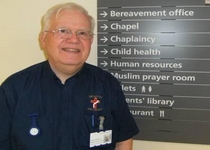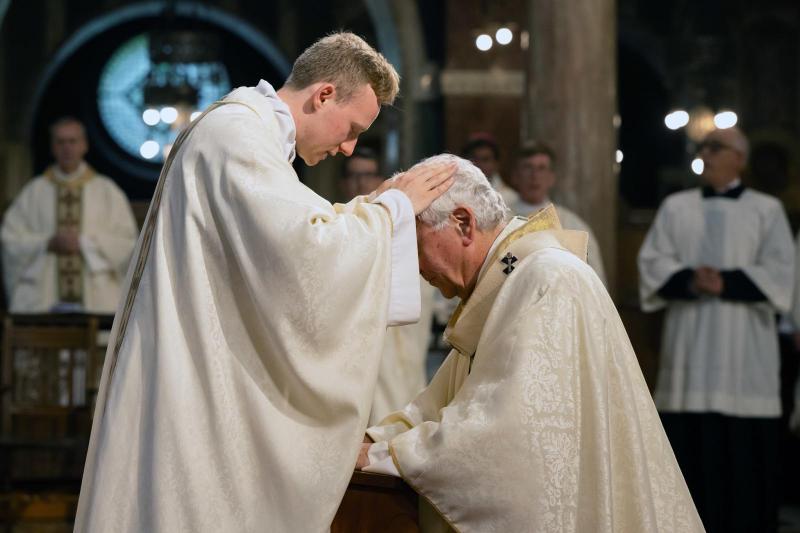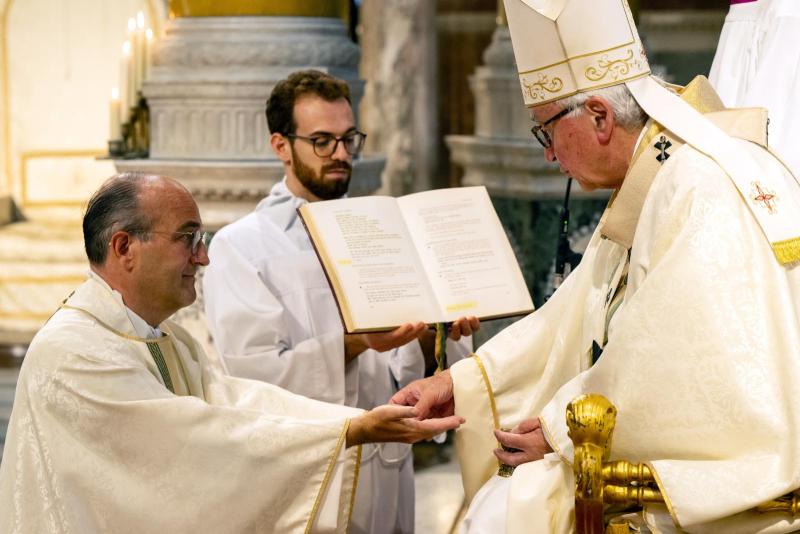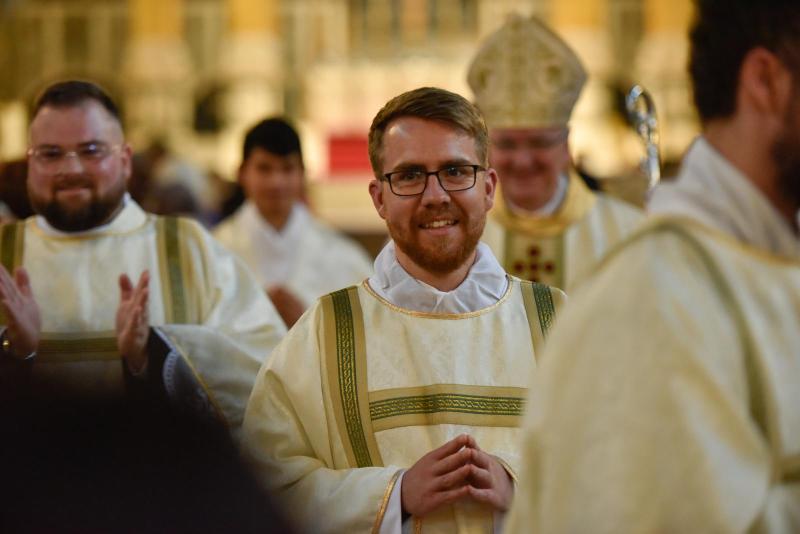Before settling in London in 1984 for what turned out to be a career spanning twenty five years in the Education Service of the Westminster Diocese, I had taught as Head of Religious Education at a school in East London, and then lectured for a few years at Newman College in Birmingham.
My wife Martine was specially happy to return to London where we settled in Childs Hill, with our two young children, Sebastien and Vincent. London is only a train ride away from her home city, Paris. Our parish was St Agnes in Cricklewood and for a number of years Father Bert Haines asked me to catechise and prepare families for the baptism of their infants. During that time I was responsible for organising the Rite of Election in the Cathedral, and by the grace of God it grew from being less than seventy candidates and catechumens in 1986 to the 800 or so it was this year. I also became very involved with Religious Education teaching, both giving advice and training as a diocesan schools inspector. In the late 70’s I was chief examiner for the first Catholic O level in Religious Studies.
In 2002 we moved to Golders Green where our parish was St Edward the Confessor where we became involved in parish life and activities. It was a combination of the promptings of my parish priest, Father John Helm and reflecting on what I was learning about the diaconate as the tutor for a then deacon-in-training David Palmer that led me to contact Canon Pat Browne, the Director of Deacons. I was accepted for formation as a deacon by Cardinal Cormac Murphy-O’Connor and when my formation was completed he ordained me as a deacon in my parish church in June 2008.
In 2003 my wife was diagnosed with inoperable pancreatic cancer and for the next five and a half years we were regular visitors to the Royal Free hospital in Hampstead. The quality of treatment she received there was such that she was able to lead a near normal life for most of the time, only when actually undergoing courses of chemotherapy was she not able to work even part time. She was very supportive of me during training for the diaconate, getting up early on those training Sundays to accompany me to Wonersh. She found great joy when I was ordained and so many people said how well she looked as her smile beamed that day in June 2008. Sadly two months later she died of her cancer at the Royal Free.
It was because of those many hours and days in the Royal Free hospital that prompted me to suggest to the Archbishop that when I retired from the Education Service in August 2009 I should become a volunteer hospital chaplain for two days a week. As a deacon I can bring the Eucharist to Catholic patients as well as chat and pray with them, though I can’t celebrate the sacrament of the sick as it is reserved to priests to administer it. I am also involved as part of the hospital chaplaincy team visiting patients of all faiths and none on the ward designated to me, being led to help them in whatever way they indicate. The picture shows me in the required ‘bare below the elbow’ outfit that I wear round the hospital. Being a hospital chaplain means that I can truly serve people in a way that is very proper to being a deacon.




